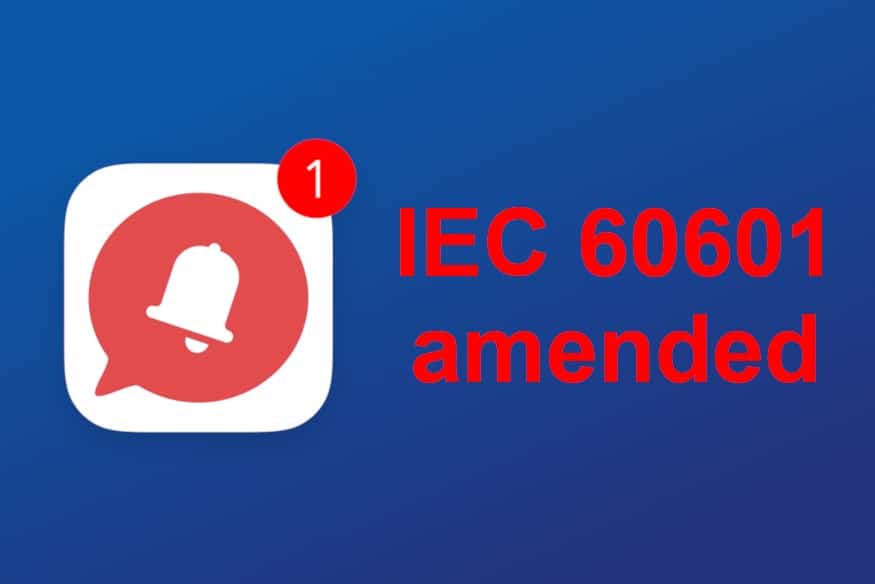IEC 60601 just got amended

Recently the IEC published updates to the IEC 60601-1 and its collateral or horizontal standards. All being part of what is referred to as the Amendment 2 project. The technical committees involved in developing and maintaining the standard have selected from all known issues and feedback the items concerning;
based on voting by the committee members. Other issues are postponed to future editions.
The IEC 60601 series covers Medical Electrical Equipment and Systems. It consists of a general or main or base standard, the IEC 60601-1. Then there are several IEC 60601-1-X standards, called collateral or horizontal standards. They cover topics common to various types of devices like EM Disturbances, Usability, Alarms, etc. The standards, called particular or vertical standards are device type specific. Then there are IEC/ISO 80601-2-X standards. These are also particular standards or vertical standards which were co-developed with ISO.
The amended standards released are the main standard and its collaterals:
The standards with substantial changes have updated clauses and new clauses. The others have minimal changes, say just editorial, references or clarifications only.
Particular standards were not included in the amendment project and are planned to be updated in the next 3 years. If your product also depends on a particular standard, you should wait for your particular to be updated as well. A notorious peculiarity of the IEC 60601 series of standards is that you cannot mix different editions. In other words, if your medical device is in scope of one of the particular standards, you would be able to start transitioning to the Amendment 2 project standards only once your specific particulars are aligned to them.
Two things need to happen next before industry can transition to the new IEC 60601 amendment 2 standards.
And if you are on the EU market, then there’s the complication of the completely halted harmonisation process. This means that the Notified Bodies to decide when to start accepting Amendment 2 standards test reports as proof of compliance. However, it is a fairly safe assumption that most Notified Bodies would adopt these standards as ‘state-of-the-art’ once the TRFs are available and testing can start.
Determine if your product compliance relies on one or more of the amended standards. Determine if compliance of your product also relies on any particular 60601 standards (being any IEC 60601-2-X or IEC/ISO 80601-2-X), if so keep an eye out for updated particulars. As you can’t mix editions within the IEC 60601 series. Once your particulars have updated, you can follow suit as soon as your particular standards are released. If you don’t depend on any particular standards, you can take the following as a guide.
You have a product on the market
Plan a gap assessment between 6 and 12 months from now. These are best done once the TRFs have become available. And, if you are in the EU market, discuss the gap and transition with your Notified Body and go from there. There’s no harmonization expected anytime soon, but there’s still ‘state-of-the-art”.
You have a product in development and plan to test and certify soon
If your development planning is to go through testing and certification in the coming months, you can proceed the process as planned. As the standards are just released, there’s time enough to adapt, as regulators and test labs etc. need to adapt first to the new to be developed TRF’s.
You have a product in development and plan to test and certify in 1 to 3 years from now
The later you are planning testing and certification, the wiser it is to include these new standards into your design and testing strategy, and certify against these standards. Make a gap analysis in the upcoming 12 months to know the impact on your product. For EU, discuss with your Notified Body early in submission process.
If you feel you could use help with; performing the gap analysis, determining the best change strategy for your specific product / market case, or with updating your technical documentation, Unitron Regulatory can help. Even if you have another regulatory question concerning your product, reach out to Unitron Regulatory. We will gladly help you find answers.